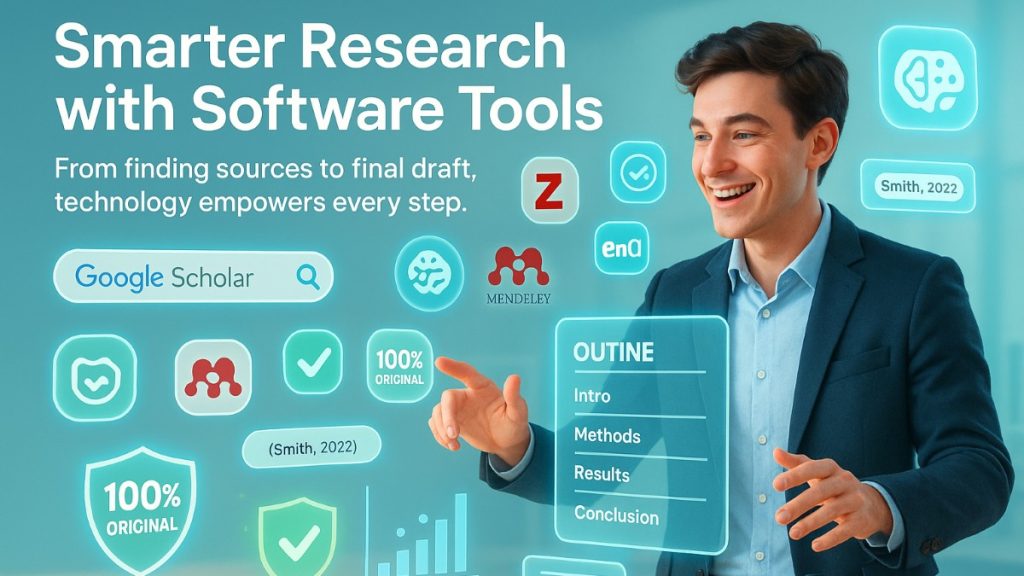Modern technology has revolutionized the educational landscape with many robust AI-driven tools. Augmented reality (AR) is one of the exciting innovations in recent years that makes learning interactive and more
Modern technology has revolutionized the educational landscape with many robust AI-driven tools. Augmented reality (AR) is one of the exciting innovations in recent years that makes learning interactive and more engaging. With the rapid advancement and increasing complexity of education, educators are constantly looking for native ways to engage students, improve learning, and simplify complex concepts. But how AR is reshaping the future of education and how it transforms traditional learning methods? This blog will explain to you everything about augmented reality in education and how it redefines the strategies students use to learn.
Understand Augmented Reality
Prior to exploring its impact on education, first understanding what Augmented Reality actually is crucial for seamless flow. In simple terms, AR is a modern innovation that is designed to streamline learning through digital content, images, sound, and videos. This enhances the student’s learning experience by adding compelling elements, 3D models, and simulations. Comparably to Virtual Reality (VR) which engages users in a complete artificial world, AR overlays digital information onto the real-world in real time.
For instance, a picture looking at a historic site on your phone and seeing facts about its past pops up. Or imagine using AR glasses to see 3D models of molecules while you're learning chemistry. It smoothly blends the real and virtual worlds, making the experience interactive and real.
The Role of Augmented Reality in Improving Learning
Making Learning More Engaging
Conventional teaching practices like lectures and textbooks have been the foundation of education for centuries. While these methods are effective, this can lead to disengaged and bored students, especially when they are dealing with intriguing and abstract concepts. To resolve this problem, AR comes in as innovative way that adds engagement and excitement in the boring learning process. This offers students a huge number of resources that will help them in different needs and purposes.
When they need help with assignments like writing research papers, they often use research paper writing services to get customized help. It includes everything from coming up with ideas to organizing their papers. With the rise of digital tools and platforms, students can now get both expert help and a wide range of resources that help them organize and present their ideas more clearly. The combination of technology in education and professional writing help makes learning easier and gives students better tools to do well in school.
Unlike traditional methods, AR transforms learning into more innovative and creative ways, ultimately providing a comprehensive experience. Let’s suppose biology teachers leverage AR to explain the human body in 3D, where students can rotate and zoom organs or bones to get a close view. Or students can see ancient Egypt or Rome through virtual field view, instead reading large theories about ancient civilization. These experiences help students grasp difficult concepts in more engaging and interactive ways in real time that conventionally take hours of time and effort.
Visualizing Complex Concepts
Some concepts are highly complex and difficult to understand, simply reading about them is not enough. For intense, hard concepts in subjects like science, mathematics, and engineering can often feel modest and difficult to understand. Augmented reality enables students to understand these concepts with interactive visual elements that traditional teaching tools can’t do.
For example, students can understand geometry easily with AR, it creates 3D animations to show how different angles and dimensions function in real time. Similarly, they learn chemistry concepts like molecules, atoms, and ions for gaining practical experience of the subject. These visual methods help refine knowledge, give hands on expertise in a way that complex theories can’t.
Foster Active Participation
Unlike theory, students understand the concepts well when they do practically, AR helps in exactly that. This interactive learning encourages students to actively participate in education, instead of passively gaining information. They can handle objects, navigate virtual environments, and even craft their own material. This holistic approach not only increases engagement but also helps strengthen critical thinking and problem-solving ability.
Implementing AR in a classroom can redefine how students work together to resolve problems. This allows them to coordinate with classmates for projects, visualize scenarios of subjects like physics, history, and biology. They are not just memorizing concepts, instead they apply their knowledge in read world representations. This consistent engagement promotes extensive learning and aid students combine their theoretical knowledge with practical expertise.
Essenetial Benefits of AR in Education
Personalized Learning Experience
Every student has their own unique capabilities and speed of understanding and observing things. AR technology focuses on providing personalized learning that meets every student's specific requirement and understanding level. For instance, those students learning through visuals can benefit from compelling 3D animations and acoustic learners can leverage sound and narration features.
Additionally, AR offers characteristics and functionality that support each student's learning growth. Educators also leverage these tools to explain a particular topic in a way that students can easily understand and provide required assistance and potential challenges as required. This level of personalization not only improves effectiveness in education but also helps students feel more supported in their academic journey.
Increasing Accessibility
Augmented Reality also makes learning more streamlined and accessible for students with disabilities. AR can help students who have trouble hearing understand better by giving them visual cues and descriptions. AR can help people who have trouble learning by giving them engaging experiences that break down big ideas into smaller, easier-to-handle pieces.
AR apps can help people learn things like languages by translating text, recognizing voices, and creating engaging lessons that are fun to do. These sophisticated tools open new opportunities for students that standard classroom environment might not offer before.
Real Time Feedback
The educational industry often uses feedback for growing and providing personalized experience. With AR, they can get real-time feedback, instant insights that help students determine students' strength and weak areas for improvement. From answering questions to solve mathematical equations, or performing a chemical experiment in science lab, instant feedback on their activity can make all the difference.
This prompt feedback empowers students to stay motivated and helps refine their strategy before they are misguiding themselves. Along with students, teachers can also get instant insights to determine strong and weak students that need additional assistance and provide support in real life.
Potential Challenges in Leveraging AR in Education
Despite the promising features and benefits, there are several challenges that individuals face while integrating AR in their learning. These challenges need to be addressed to ensure seamless workflow and leading negative user experience. One of the common and most significant challenges is its high cost, user need to invest high for implementing AR technology in their academic settings. While not every school has available devices and resources required to integrate AR into the classroom, this can be a big challenge for small schools.
Not all schools have access to the devices and resources needed to fully integrate AR into the classroom. This digital gap can create inconsistencies between high level schools that afford this technology and small schools that cannot. Meanwhile teachers also need to go through proper training to effectively integrate AR tools in classrooms. As it is an innovative approach that offers potential benefits, it’s important for teachers to have a clear understanding about the integration process. Effectively using tools in their lesson plan is crucial to provide enhanced, personalized learning experience tailored it specific needs of students.
Lastly, screen time is also a major challenge that keeps students addicted to digital devices. This is the crucial concern for both students and teachers to minimize negative effects of resource uses and technology impact on mental and physical health, as students already spend a lot of time in front of screens. AR needs to be implemented thoughtfully to strike a balance between technology and traditional learning methods.
Future Scope of AR in Education
With the continuous advancement in technology, their future of AR in education is bright and promising. With the aim of making learning more accessible and affordable, we will definitely see a broad success of this cutting–edge innovation. We can except a wide adoptability of AR in classrooms around the globe, offering engaging and interactive learning experiences. This can include various applications like virtual field animation, visual representation of historical events, and real-time language translation.
The significant potential of AR leads the way to transform the way teachers approach teaching and lesson preparation. This allows them to create customized, engaging lessons that is tailored to the requirements of each student, promoting a more interactive and comprehensive environment.
Conclusion: A Game-Changer for Education
In modern times, AR is revolutionizing education that has transformed learning practices that were impossible a few years ago. This makes learning accessible, interactive, and personalized which helps students easily grasp the difficult concepts and stay motivated throughout their academic journey. While there are still several challenges, the capabilities of AR in education have changed learning to become more crucial than ever before.
The upcoming years can be more revolutionizing as many schools and universities are rapidly adopting the technology, promoting a more flexible and accessible learning environments for students globally. With the rapid advancement in AR technology, it will definitely become an important tool that contributes to the future of education. This advanced platform can redefine the methods and practices required to learn and engage with the environment around us.
Related Posts:
Exploring the Importance of AI in Education and Its Revolutionising Impact on the Education
Respond to this article with emojis






